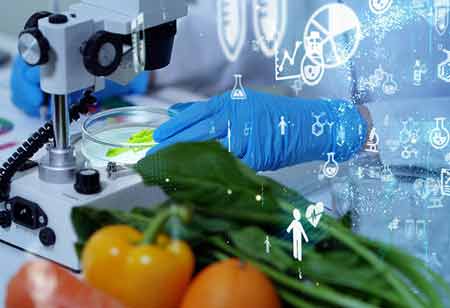Thank you for Subscribing to Food Business Review Weekly Brief
- Home
- Topics
- Alternative Proteins and Plant Based Food
- Beer and Wine
- Canned Beverages
- Coffee And Tea
- Food and Beverage Consulting
- Food and Beverage Financial Service
- Food And Beverages Marketing
- Food Distributors
- Food Ingredients
- Food Sustainability
- Plant Based Food and Beverages
- Seafood Suppliers
- Supplement Manufacturing
- Wine Investment
- News
- Vendor Viewpoint
- CXO Insights
- Conferences
- Newsletter
- CXO Awards
-
Food Safety Hazards Reducing through the use of technology.
Today, the food industry faces risks with each shift. This needs their teams to take preventative measures to minimize the likelihood of a foodborne illness incidence,

By
Food Business Review | Monday, January 25, 2021
Stay ahead of the industry with exclusive feature stories on the top companies, expert insights and the latest news delivered straight to your inbox. Subscribe today.

Food Operators must maintain constant alert to reduce or end risks like food safety violations, fraudulent reports, and security breaches. Technology tools provide the safety, efficiency, and profitability of operations—and can help to mitigate several dangers that could potentially ruin a business's brand.
FREMONT, CA: Today, the food industry faces risks with each shift. This needs their teams to take preventative measures to minimize the likelihood of a foodborne illness incidence, security breach, or other disasters. Hospitality sector must now apply COVID-19 protocols in addition to "basic" safety standards and norms, which are constantly evolving to comply with local, state, and federal guidelines. The industry-wide workforce shortage complicates these hazards, making it even more difficult for food enterprises to function efficiently and follow safety procedures.
Even a small deviation from SOP is a reason for tension. Seemingly harmless mistakes—such as improperly closing a freezer door—could end in significant liability for a food brand. And faults occur, mainly if the food industry is understaffed or new staff unfamiliar with safety protocols.
Operators monitor and reduce risk in various ways, with some depending on paper checklists and others on extensive digital systems. While operators desire to minimize risk, transforming their outmoded safety systems may not be high on the recommendation in their priority list, primarily while dealing with massive COVID-related outages, catastrophic financial losses, supply chain disruptions, and human capital crises.
While it may seem difficult to consider purchasing and establishing new technology tools now—with so many other pressing issues requiring great attention—the negative consequences of a potential security breach could be catastrophic, resulting in loss of customer trust, negative comments from the press, scandaling social media comments, and potential litigation. Information technology solutions may help the firm minimize risks—and maximize compliance—across the board.
Enterprises in the food industry would be prudent to:
Utilize technological tools techniques to improve food safety monitoring
It will only take one mistake to degrade a brand's reputation. Employees may be pressed for time and mistakenly skip a line check, which ends in the serving of dangerous food. What is required is the use of technology tools—such as safety checking through a smartphone application other than a paper
checklist—that can improve compliance and accuracy, and peace of mind is guaranteed that safety checks were conducted properly.
The integration of Bluetooth technology into food safety software can track the temperature of refrigerators and freezers and alert employees if they are operating outside of safe limits. The sensors automatically record and store data. In addition, today's digital technologies enable managers to see any patterns of employees inputting data wrongly or bypassing line checks.
Identify problems before they become costly liabilities.
Manual processes have many demerits; among them is the inability to see, synthesize, and analyze data in real-time. As a result, the food industry that depends on manual processes may not be aware of potential hazards until weeks, if not months, after reports are compiled. Meanwhile, by utilizing technology to handle data, it is possible to identify in no time—and correct—potential problems before they turn into significant liabilities.
Automatic, real-time reporting is critical and leads to reducing risk. Digital reports enable food safety staff to see patterns, verify that the proper standards are being followed, and establish whether data is altered.
Maintain familiarity with ever-changing COVID guidelines
Throughout history, hygiene has been a critical aspect of food safety. traditionally, food enterprises have employed "behind-the-scenes" cleaning techniques. COVID-19 pandemic altered this dynamic—most likely for the foreseeable future—as customers, sellers, and critical audiences expect and want to experience cleaning nicely performed and continuously.
Nowadays, staffs, customers, and other important constituencies expect that COVID practices—including masks, sanitizing, social isolation, staff temperature checks, and increased handwashing—will be followed, especially as the highly contagious Delta variant continues to spread.






